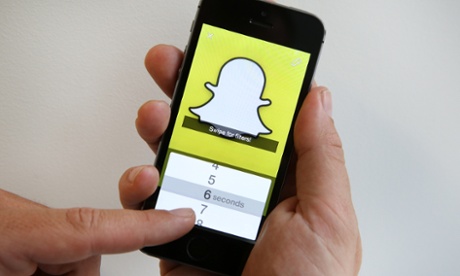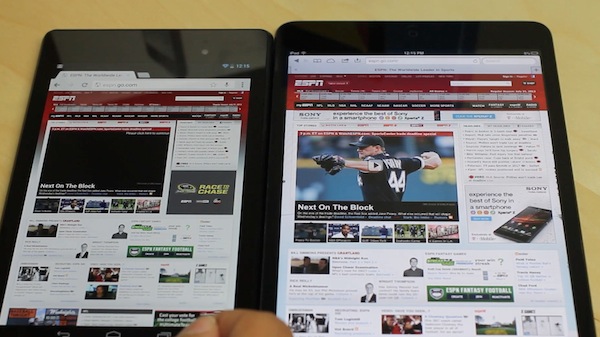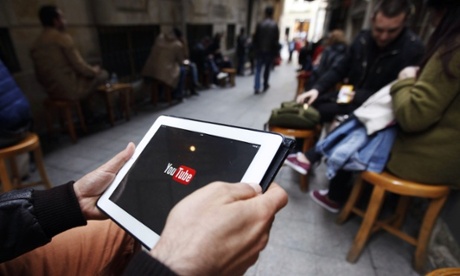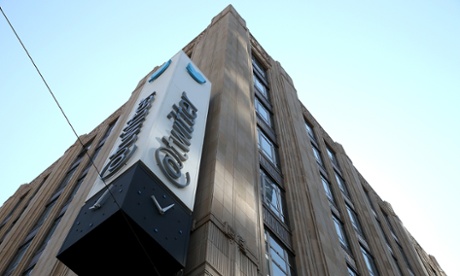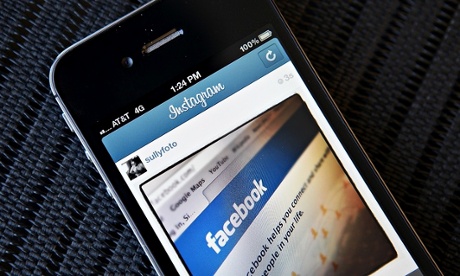Section summaries:
Section 1:
To all the bystanders reading the article, David Simon pardons himself.
Section 2: Arthur Sulzberger Jr. and Katharine Weymouth, publishers of The New York Times and The Washington Post.
Section 3: If you find good content, you must also find a way to make people pay for it.
Section 4: The idea of creating revenue from online subscriptions seems dangerous.
Section 5: Rupert Murdoch believes that if U.S. newspaper publishers could meet in a bathroom somewhere and talk bluntly for fifteen minutes would be easier.
Section 6: National newspapers continue to retrench and regional papers are destroyed outright.
Section 7: You must act together, both news organizations must inform readers that their Web sites will be free to subscribers only.
Section 8: No half-measures, no TimesSelect program that charges for a handful of items and offers the rest for free, no limited availability of certain teaser articles.
Section 9: You must both also individually inform the wire-service consortiums that unless they limit membership to publications, online or off, that provide content only through paid subscriptions.
Section 10: When the Justice Department lawyers ask why America’s two national newspapers did these things made the paywall argument. Say, We never talked. Not a word. We read some rant in the Columbia Journalism Review that made the paywall argument.
Section 11: The Times and The Post are ongoing, according to sources at both papers.
Section 12: Should the Times go behind a pay curtain while the Post remains free, or vice versa?
Section 13: Will it work?
Section 14: For the Times and The Post, entities that are still providing the lion’s share of journalism’s national, international, and cultural relevance-their reach has never been greater.
Section 15: Print circulation into a profit center for the first time in years, by raising the price, with news stand prices rising in June to $2 and up to $6 on Sunday.
Section 16: If the only way to read the Times is to buy the Times, online or off, then readers who clearly retain a desire for that product will reach for their wallets.
Section 17: The newspaper is all but dead, they will insist. Long live the citizen journalist.
Section 18: While their resentment and frustration with newspapers, given the industry’s reduced editorial ambitions are justified.
Section 19: In the ensuing thirty years, we have become a nation that shells out $60, $70, or $120 in monthly cable fees.
Section 20: Content is all.
Section 21: Wall Street command profit margins of 25 and 30 percent.
Section 22: Unlike television, in which industry leaders were constantly reinvesting profits in research and development, where a new technology like cable reception would be contemplated for all its potential and opportunity.
Section 23: The remaining monopoly newspapers in American cities, roped together in unwieldy chains and run by men and women who had, by and large, been reared in boardrooms rather than newsrooms.
Section 24: In the 1970s, American auto manufacturing was complicit in its own marginalization through exactly the same mindset: Why not churn out Pacers and Gremlins and Vegas, providing cheap, shoddy vehicles that would be rapidly replaced with newer cheap, shoddy vehicles?
Section 25: The analogy doesn't quite capture the extraordinary incompetence exhibited by the newspaper industry.
Section 26: A blog here, a citizen journalist there, a news Web site getting under way in places where the newspaper is diminished.
Section 27: Detroit lost to a better, new product; newspapers, to the vague suggestion of one.
Section 28: A certain wonderment that so many otherwise smart people in newspapering could have so mistaken the Internet and its implications.
Section 29: There is firstly the familiar industrial dynamic in which leaders raised in one world are taken aback to find they have underestimated the power of an emerging paradigm.
Section 30: In 1995 the Baltimore Sun were explaining the value of their free Web site in these terms: this is advertising for the newspaper.
Section 31: On the business side, they were a little busy hurling profits at Wall Street to pay much attention.
Section 32: When newspapers never charged readers what it actually cost to get the product to their doorstep.
Section 33: This specific dynamic maximized everyone’s blindness to the real possibilities of a subscription model.
Section 34: For example, if The Baltimore Sun’s product isn't available in any other fashion than through subscription, online or off and if there is no profit to be had in delivering the paper product to homes at existing rates.
Section 35: Consider: 10 percent of the existing 210,000 Baltimore Sun readers, for example, who pay a subscription rate less than half the price of home delivery, or roughly $10, would represent about $2.5 million a year.
Section 36: Last, and perhaps most disastrous, the rot began at the bottom and it didn’t reach the highest rungs of the profession until far too much damage had been done.
Section 37: As early as the mid 1980s, the civic indifference and contempt of product inherent in chain ownership was apparent in many smaller American markets.
Section 38: Last year at The Washington Post, the paper’s first major buyout arrived at about the time of its six Pulitzer victories.
Section 39: To employ another historical metaphor: when they came for the Gannett papers, I said nothing, because I was not at a Gannett paper.
Section 40: For the industry, it is later than it should be; where a transition to online pay models would once have been easier with a healthy product, now the odds for some papers are long.
Section 41: If the Times and The Post go ahead and build that wall, one possible scenario will be that The Times and The Post survive, their revenue streams balanced by still-considerable print advertising, the bump in the price of home delivery and newsstand sales, and, finally, a new influx of cheap yet profitable online subscriptions.
Section 42: Reassured that they can risk going behind the paywall without local readers getting free national, international, and cultural reporting from the national papers.
Section 43: Some of the chain dailies may well make the mistake of taking the fresh revenue and rushing it back to Wall Street.
Section 44: Others do reinvest in their newsrooms, hiring back some of the talent lost.
Section 45: Scenario two: In those cities where regional papers collapse, the vacuum creates an opportunity for new, online subscription-based news organizations that cover state and local issues, sports, and finance.
Section 46: In a metro region the size of Baltimore, where 300,000 once subscribed to a healthy newspaper, imagine an initial market penetration of a tenth of that 30,000 paid subscribers (in a metro region of more than 2.5 million), who are willing to pay $10 per month.
Section 47: That’s $300,000 a month in revenue, or $3.6 million a year, with zero printing or circulation costs.
Section 48: Round it up to $4 million in total revenue, then knock off a half million in operating and promotional costs.
Section 49: Third scenario is except for one in which professional journalism doesn't endure in any form, this is the worst of all worlds.
Section 50: Imagine major American cities without daily newspapers, and further imagine the Times or The Post employing just enough local journalists in regional markets to produce zoned editions.
Section 51: The longer it takes for the newspaper industry to get its act together, the more likely it is that regional dailies will be too weak and hollow to step through the online-subscription portal.
Section 52: Mr. Sulzberger and Ms. Weymouth have yet to turn that last card. Until they find the will and the courage to do so, no scenario other than the slow strangulation of paid, professional journalism applies.
David Simon's argument:
David Simon’s main argument in the ‘Build the Wall’ article is
about what the effects of newspaper companies setting up paywalls has on
audiences as well as the business. Simon looks at two newspaper’s in particular,
The Times and The Washington Post. It is interesting how he looks at the effects
of one newspaper setting up a paywall, or even do the opposite of making it
free and what impact it will have on the newspaper Company and competition. The
article is dedicated to Arthur Sulzberger Jr. and Katharine Weymouth. Who are
the published of The New York Times and The Washington Post. The article also
talks about online subscription fees and whether charging consumers to read
newspapers online is an effective way to gain profits. Moreover, it looks at
the decline in print newspapers and the transformation print media has had from
the 1990’s to 2009 (when the article was published). Simon looks further into
content being a key factor in order to produce a good newspaper that will sell.
After all, consumers do not want to pay for or read a newspaper that provides
them with information that they do not find useful or is uninteresting. At the
end of the article, Simon gives details about three possible scenarios he
believes would take place if the Times and The Post were to go ahead and build
the wall. Simon has obviously put a lot of time and effort into producing this
article, which I believe is helpful to anyone working in the newspaper
industry.
Article comments:
Fabulous analysis. Have one suggestion.
The analysis is fabulous because David Simon reports on the behind the scenes transformation in business management drivers in media and other markets (e.g. detroit). Like the writer, I've experienced the days when product development and sales were the drivers for managing business. Today financial performance is the driver. When the latter dominates the former, the result is mediocrity and tricky business models to derive revenues. It is time to invest in producing a product everyone is proud to make, sell, and buy.
Also, Simon's credibility is high due to his participation in the premium cable market. Subscription levels and profits are at all time highs in 4th qtr 2008, even during the peak of an economic crisis. This is a clear message from consumers which all media should listen carefully to. Do not underestimate what consumers will pay for quality.
My suggestion. A 5 page article allows the author to truly analyze the problem, doesn't it? This is a competitive advantage. Free news TV and talk radio don't have the time to cover news so comprehensively. Bloggers don't have the resources for comprehensive research and analysis. Consider how comprehensive coverage - among other features enabling real time interactivity from anywhere and quality control - would transform audience interactivity from chaotic to rewarding conversations. Such satisfying conversations and the potential collateral benefits (chance to connect with like-minded people) would sustain a premium subscription base.
Katherine (at) comradity.com
#29 Posted by Katherine Warman Kern on Tue 21 Jul 2009 at 08:30 AM
This comment agrees with David Simon's argument and article he has produced. However critises it as it does not look at the bigger picture and there are more factors which affect the newspaper industry. The comment posted by Katherine suggests Simon's research lacks depth.
Unfortunately I think Mr Simon has the issue around the wrong way. It is not the flagship newspapers with an international standing that need to lead the way, rather the smaller smaller market papers. The Times and Post will always be insulated by interest from overseas, previously a market that with limited exposure to the mastheads.
Whichever plan they choose, online subscriptions, abadoning the print edition entirely or investing more resources in the website to attract greater advertising will likely work. They are big enough and have a large enough audience to make it happen in some form. Whichever path they choose, revenue will be there, it's just a question of how much.
The second scenario suggested by Mr Simon doesn't hold water. Mr Simon neglects to account for the costs of internet hosting, administration and legal fees. It also doesn't account for the fact that people are less regional online, with interest in local news declining.
Also, another important question to consider is not the medium the content is delivered in, but what the content is.
Aside from government, newspapers are the last industry to try to provide all possible content that could interest every individual from their region be they aged 8 or 80.
Editors and managers are scared to drop the funny pages or bridge results lest it reduce circulation by 100.
Perhaps the model will be in specialised reporting areas. This model would see for example a specialised court reporting service, where a news agency covers the most interesting cases and legal issues in a national service.
Or publishers could move toward either more streamlined papers, where a tabloid only offers news and sport or a broadsheet politics and business.
#71 Posted by David Stockman on Sun 9 Aug 2009 at 11:18 PM
This article also suggests that Simon needs to consider more factors and issues as his statements are not so straightforward. The comment written by David suggests that Simon has neglected costs of internet hosting, administration and legal fees. The comment therefore disagrees with Simon's article as it again lacks depth and research.
One admittedly major tweak to Simon's suggestion: Set up an industry clearinghouse that keeps track of retrieval of articles by individual account. Rather than traditional subscriptions, readers would maintain an account w/the clearinghouse, debited for each article retrieval.
This clearinghouse could also be the entity that protects copyright interests on the behalf of the newspaper industry.
This scheme would avoid re-Balkanizing readership by unnecessarily forcing readers into title-specific pigeonholes, would avoid forcing them to pay for much content they don't use, while at the same time ensuring that revenues flow to newspapers doing the most relevant work for readers.
#70 Posted by Doug Bostrom on Tue 4 Aug 2009 at 06:27 PM
Moreover, this comment suggests that Simon lacks research and issues to consider in his article. Several comments on the article criticize Simon because they feel his statement has not considered a wide range of factors and their effects in the newspaper business industry.
Conclusion:
In my opinion, i do not believe that all newspapers need to put content online behind a paywall. I say not all newspapers because every newspaper industry serves a different purpose. Some are to be profitable (in that case, build a paywall and offer consumers subscriptions), however industry's such as the BBC provide free news because that is their purpose and company values. Furthermore, in order for journalism to survive, i believe that journalists should find a different pathway into their career. To be honest, the newspaper print industry is dying slowly and the ones that seem to be surviving and distribute on a mass scale are those which are free e.g. Evening Standard. Consumers want convenience and this newspaper is easy to pick up and is widely available on buses and the tubes/stations. Personally, i would not be willing to pay for news online. This is however because i trust source such as the BBC who provide news for free of charge, therefore i do not feel the need to pay for an alternative source of news.

